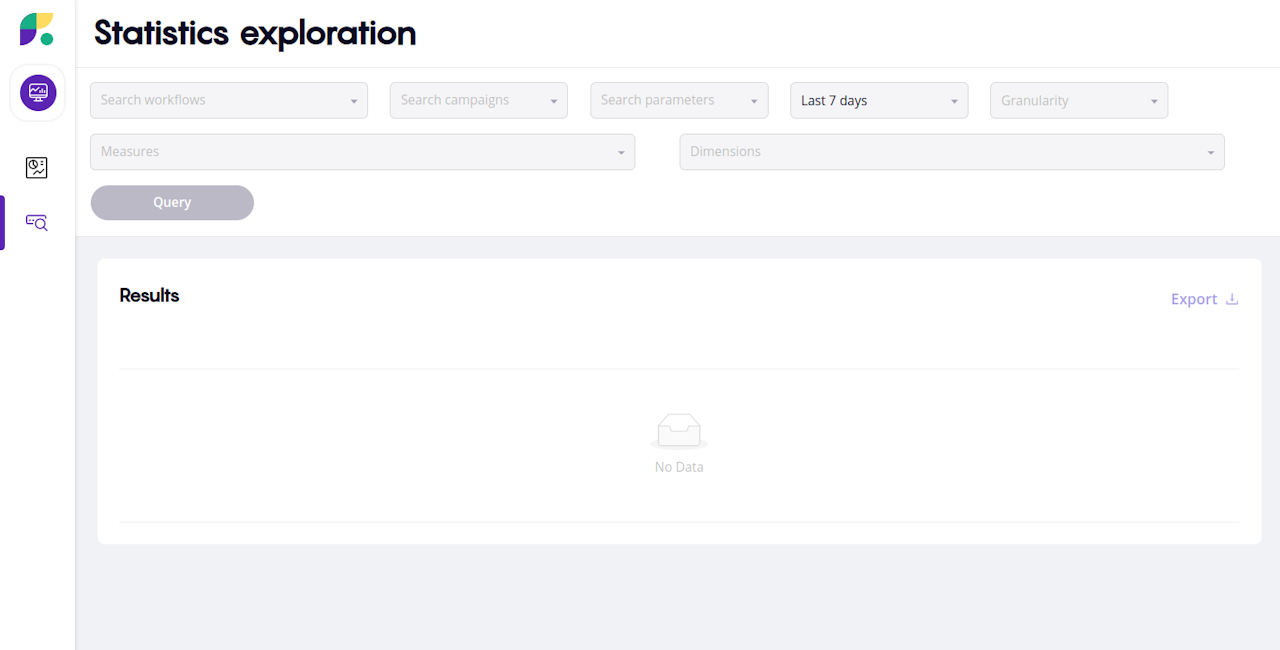
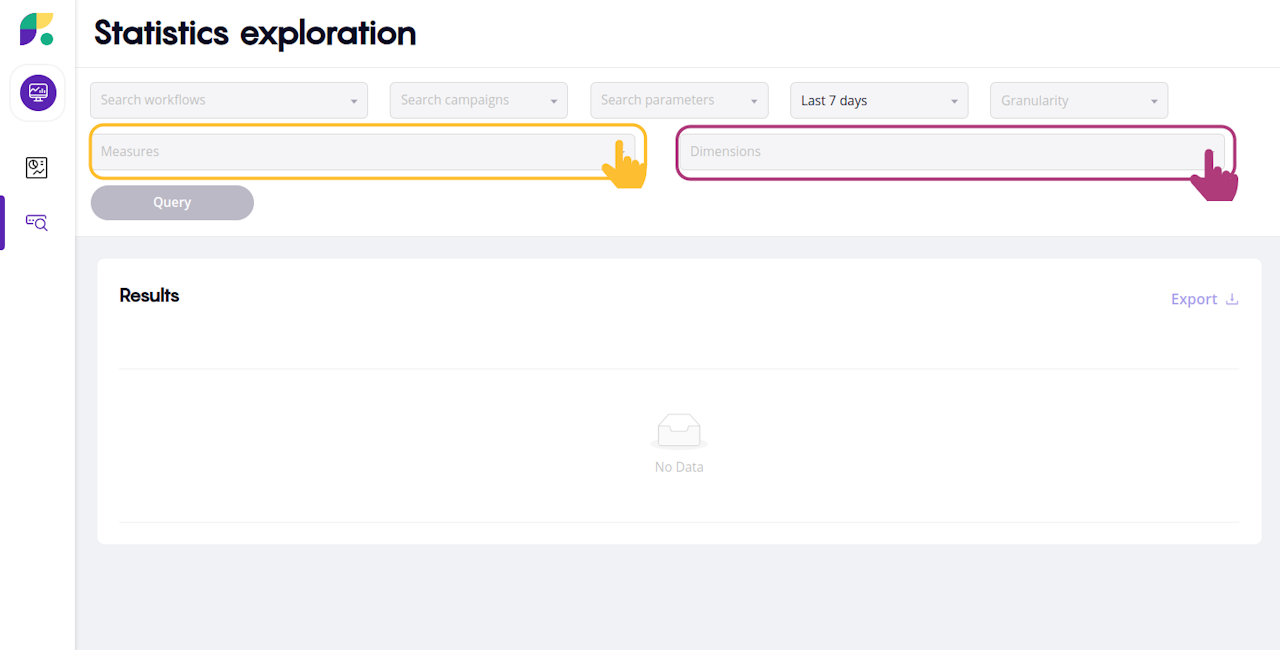
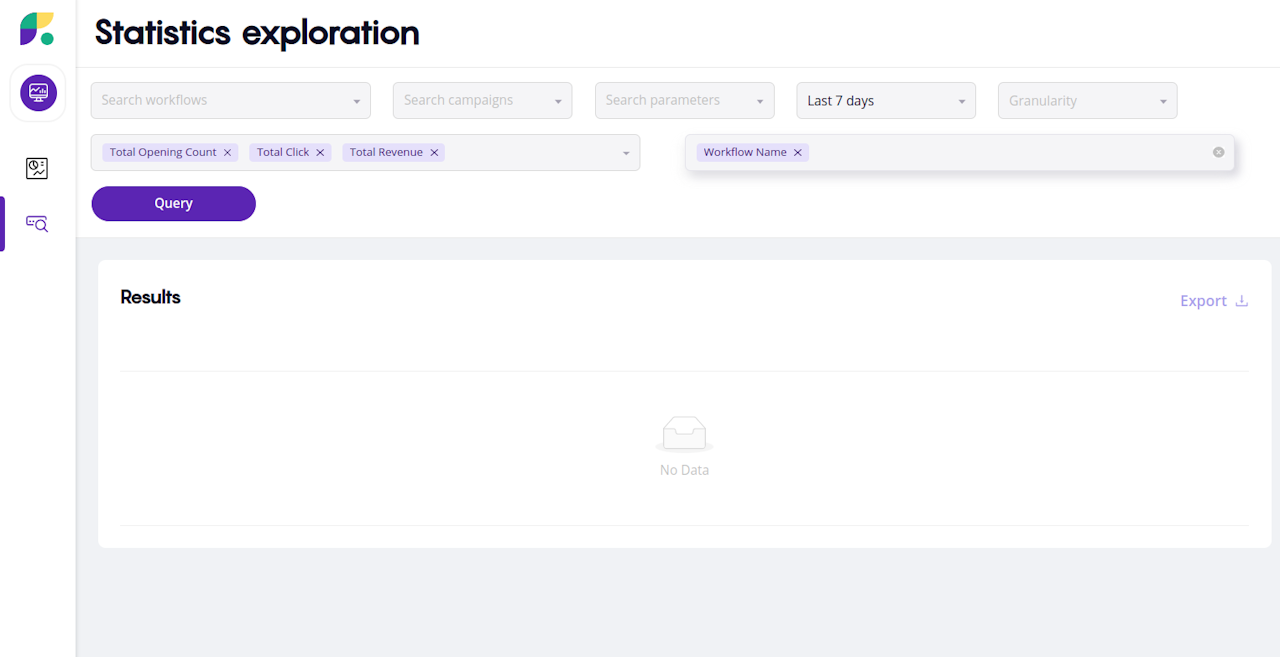
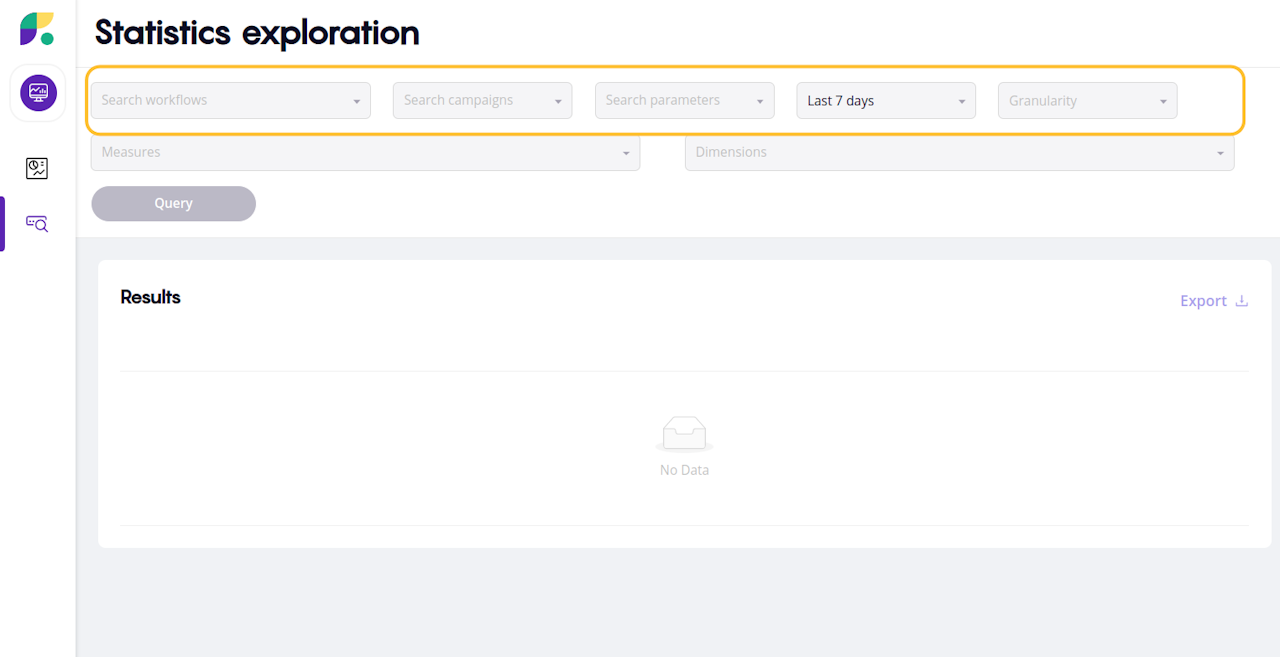
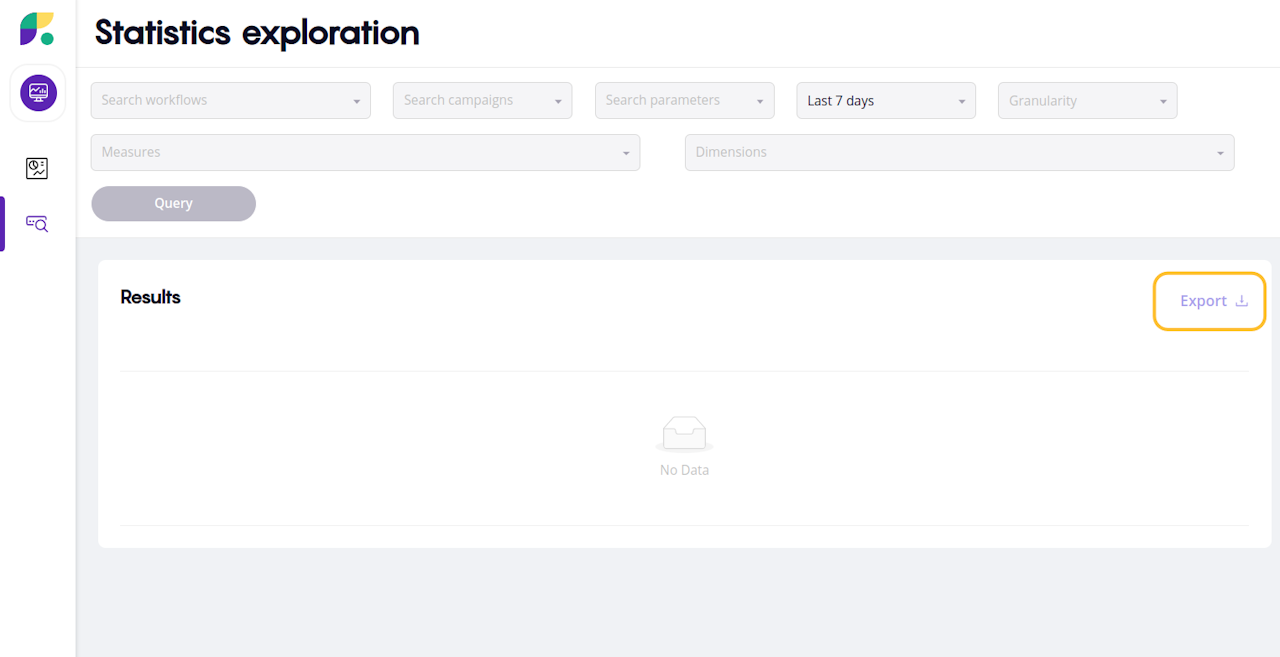

Introduction
The exploration allows you to go much deeper into the behavior of each workflow by allowing arbitrary query on any statistics.

Measures & Dimensions
In the context of analytics and big data queries, a measure is a quantitative metric that is used to analyze data. Measures are typically numeric values that can be aggregated, such as sums, averages, counts, or percentages. Measures are used to calculate key performance indicators (KPIs) and to compare data across different dimensions.
On the other hand, a dimension is a categorical attribute that is used to group, filter, or slice data. Dimensions provide context for the measures, and help to organize and categorize data into meaningful groups. Examples of dimensions include time, contents, branches or opener informations.
In summary, measures are quantitative values used to analyze data, while dimensions are categorical attributes used to group and organize data for analysis.

Examples
As the theory can be a bit intimidating, here's a simple example where we want to list the number of opening, click and revenue generated by each workflow on the past 7 days.
As you can see i'm selecting the tree measures (opening, clicks and revenue) and then using workflow name as a dimension, which will then create one result for each workflow.

Filters
Additionally you can filter by:
Specific workflows
Specific URL parameters
Specific message (rlvt-m in your workflow links)
Then you can select a specific range and even ask for a specific granularity, for example you can select "Month" to get a measure over your selected duration per month.

Exporting
After getting the result of your exploration, you might want to export the result to play around with the data. To do so you can click on "Export" that will generate a CSV file that you can load in Excel or Google Sheets.
Note: We plan to expand the export capabilities soon (like exporting by email)
